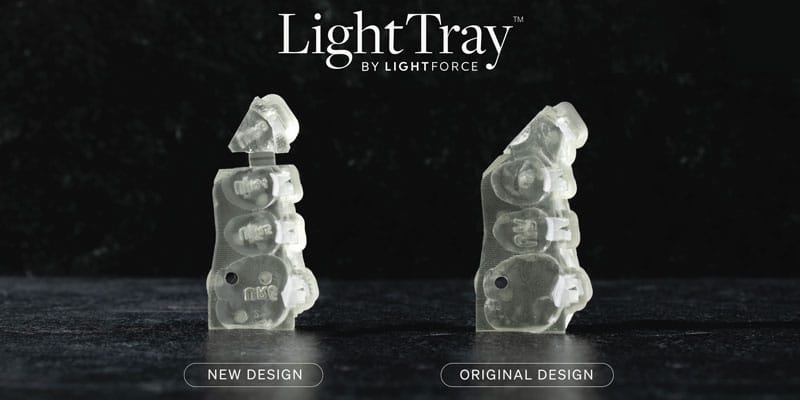LightForce personalization is found throughout the end-to-end process that seamlessly integrates into the orthodontic practice.
 Why personalization matters in orthodontics
Why personalization matters in orthodontics
Who is LightForce?
LightForce Orthodontics’ CEO and co-founder, Dr. Alfred Griffin III, has set a simple, yet powerful mission for the company: “To empower the experts to create the unique bite and smile that every patient deserves.”
It is little wonder then, that continually advancing orthodontic personalization is at the core of what LightForce does.
Why personalization matters
“We want to be the best at listening to orthodontists who use our technology.” Dr. Griffin attests.
The personalization of LightForce’s LightTray indirect bonding system is proof of that. By collecting data and listening to customer feedback, LightForce zeroed in on a clear correlation between the severity of crowding, spacing, tooth eruption, and debonds for certain teeth.
“By personalizing the IDB tray segment design in LightTrays, we’ve been able to improve the consistency of our bracket bond strength. This means fewer disruptions to patient care, and tooth movement is more direct.” Dr. Griffin explains.
According to Vice President of Product, Doran Robinson, the new LightTray innovations add another important degree of personalization in the bonding workflow.
“Historically, analog indirect bonding was challenged in determining how many teeth to include in the bonding tray. Some included full arches, and even LightForce included segments of four teeth. We learned through bracket reorder data that the real answer is that one size doesn’t fit all — it should depend on the patient’s unique clinical condition,” Robinson explains.
Analog brackets use a prescription based on averages from dental casts of a very small, non-diverse population (Andrews, LF. The six keys to normal occlusion. Am J Orthod. 1972;62(3);296-309). Decades later, we’re still using the same brackets on every single person, and teeth take a less direct path as a result.
Unsurprisingly, this means orthodontists must spend a great amount of time compensating for a prescription that was never ideal to the patient to start with, ultimately yielding a final result that is still only “close enough” to the desired outcome.
“Even if a stock bracket had the ideal prescription, there’s so many factors that dilute the ability to express the prescription that is in that bracket, such as inaccurate positioning by a clinician and wire slot play,” Dr. Chris Bonebreak Jackson, LightForce’s Head of Clinical Affairs, explains.
All of those variables result in the need for bracket repositions or wire bends to achieve the desired outcome. Dr. Jackson also notes that the higher the forces that are applied to a tooth and the longer those forces are applied correlates with increased risk of root absorption (Roscoe, MG, Meira JB, Cattaneo PM. Association of orthodontic force system and root resorption: A systematic review. Am J Orthod Dentofacial Orthop. 2015;147(5):610-626), so multiple adjustments can actually be unhealthy for the patient.
Get to know the LightForce personalized platform
LightForce is a personalized end-to-end solution that seamlessly integrates into your practice, powered by 3D-printed custom brackets, advanced LightTray indirect bonding technology, and intuitive digital planning software. The three work in conjunction to ensure highly efficient delivery of the desired finish.
LightPlan
The proprietary digital planning software takes into account treatment planning principles and the doctor’s patient prescription to produce an ideal patient outcome, which can be easily modified by the orthodontist if needed.
LightBracket
LightForce’s 3D-printed brackets are personalized in significant aspects of the bracket (the base, the slot, and the positioning) to achieve the desired outcome using a straight wire.
LightTray
The LightTrays are digitally designed and 3D printed in a proprietary material to deliver the brackets to their intended position on the teeth. The unique, personalized design of each tray reduces the likelihood of bond failures or inaccurate bracket placement compared to a one-size-fits-all indirect bonding tray.
This information was provided by LightForce.
Stay Relevant With Orthodontic Practice US
Join our email list for CE courses and webinars, articles and mores

 Why personalization matters in orthodontics
Why personalization matters in orthodontics
